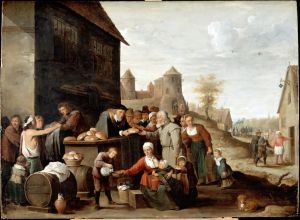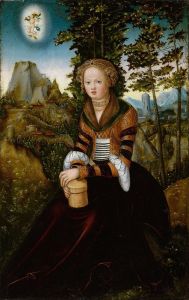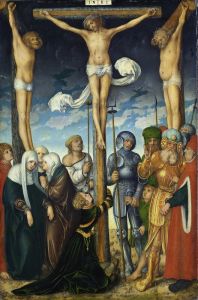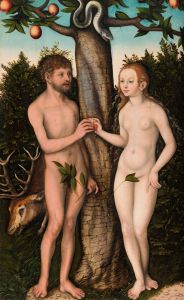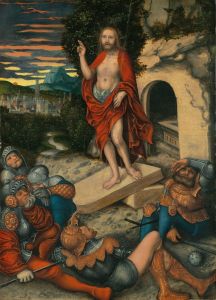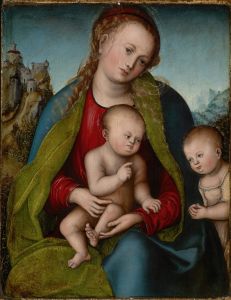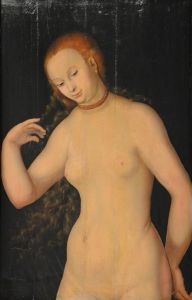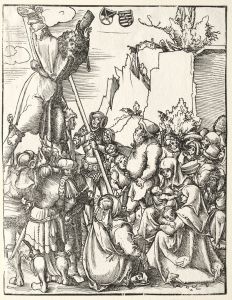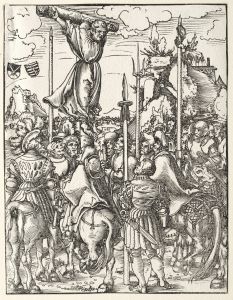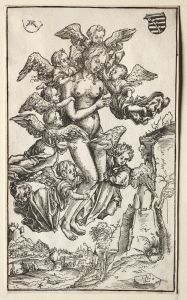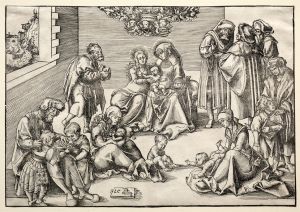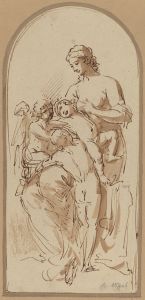
Caritas
A hand-painted replica of Lucas Cranach the Elder’s masterpiece Caritas, meticulously crafted by professional artists to capture the true essence of the original. Each piece is created with museum-quality canvas and rare mineral pigments, carefully painted by experienced artists with delicate brushstrokes and rich, layered colors to perfectly recreate the texture of the original artwork. Unlike machine-printed reproductions, this hand-painted version brings the painting to life, infused with the artist’s emotions and skill in every stroke. Whether for personal collection or home decoration, it instantly elevates the artistic atmosphere of any space.
Lucas Cranach the Elder, a prominent German Renaissance painter, created the artwork Caritas (Latin for "Charity") in the early 16th century. This painting is one of several works by Cranach that explore allegorical and moral themes, reflecting the intellectual and cultural currents of the Renaissance period. Cranach was known for his ability to blend religious and humanist ideas in his art, and Caritas is a notable example of this synthesis.
The painting depicts the personification of Charity, one of the three theological virtues in Christian tradition, alongside Faith and Hope. Charity is often represented as a nurturing maternal figure, embodying love, generosity, and care for others. In Cranach's Caritas, the central figure is a woman surrounded by children, emphasizing her role as a caregiver and protector. The composition conveys warmth and intimacy, with the children clinging to or interacting with the central figure, symbolizing the selfless love and compassion that Charity represents.
Cranach's style in Caritas reflects his mastery of detail and his ability to convey emotion through gesture and expression. The figures are rendered with delicate precision, and the soft, luminous colors enhance the painting's tender and harmonious atmosphere. The background, typical of Cranach's works, may include naturalistic elements such as trees or landscapes, though the specific details of the setting in Caritas can vary depending on the version or interpretation of the painting.
Lucas Cranach the Elder was a court painter to the Electors of Saxony and a close associate of Martin Luther, the leader of the Protestant Reformation. While much of Cranach's work includes religious themes, he also produced portraits, mythological scenes, and allegorical works. Caritas fits within his broader oeuvre of moral and allegorical paintings, which often carried didactic messages or reflected the values of his patrons.
Several versions of Caritas exist, as Cranach and his workshop frequently produced multiple iterations of popular themes. These versions may differ slightly in composition, color, or detail, but they all share the central theme of maternal love and selflessness. The painting's exact date of creation is not always clear, as Cranach's workshop often collaborated on pieces, making it challenging to attribute specific works to the artist alone.
Today, Caritas is housed in various collections and museums, depending on the specific version. The painting continues to be admired for its artistic quality and its ability to convey universal themes of love and compassion.






